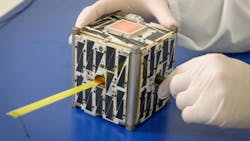Power Density in NASA Small Spacecraft Systems (Download)
Electrical power system (EPS) designs for NASA’s spacecraft have a powerful and essential subsystem that surrounds the electrical power generation, storage, and distribution. It encompasses a large portion of volume and mass in any spacecraft.
Continuously powering these electrical subsystems requires solid power density. Controlling the generated power while focusing on capability gaps that may exist within the spacecraft transportation power systems, especially for astronaut exploration vehicles, requires high-efficiency power systems, as well as surface nuclear and mobile power systems.
